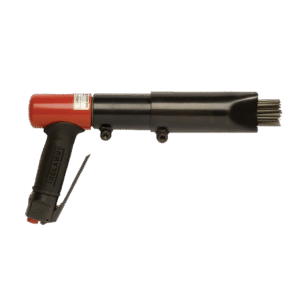HAVS is an acronym which stands for
Hand Arm Vibration Syndrome and it encompasses a group of symptoms, caused by damage, from the use of vibrating tools.
Some of these symptoms include:
- Decreased grip strength
- Decreased hand sensation and dexterity
- Finger Blanching or “White fingers”
- Carpal Tunnel Syndrome
According to an article on SafetyAndHealth magazine.com… “About 2 million US workers are exposed to hand-arm vibration, and as many as half will develop HAVS. Some experts believe the number may be higher because the disorder is sometimes unrecognized or under reported.”
Worldwide estimates vary but potentially 10’s of millions of workers are exposed to high levels of vibration in the workplace.
Donald Peterson, Joint Professor of Biomedical Engineering at Texas A&M University is quoted as saying, “I’d go as far to say it’s probably the No. 1 neuromuscular disorder in the world in manufacturing and construction environments, the most costly, and underappreciated.”
If so many workers suffer from HAVS why then is this not a big industry topic?
- In the United States OSHA has not yet established any standards regarding exposure limits to vibration for either Whole Body or Hand and Arm.
- In Australia, OSHA has set standards for Whole-Body, but not Hand and Arm.
This is the case even though both ANSI and the EU share an exposure limit for both categories.
If you are thinking – well, the government knows best – consider the fact that at one time, governments didn’t outlaw silica either. Just because it’s not mandated yet doesn’t mean you should look the other way when it comes to your employees, or your own health and safety.
As a matter of fact, according to NIOSH biomechanical engineer, Daniel Welcome – “Hard-Arm Vibration Syndrome can take six months to six years to develop and, after the fingers blanch, the condition is irreversible.”
Friends, don’t wait for the government – The evidence is available if you google it. Protect yourself. And we’re going to tell you how.
Here is a list of solutions that can help… and we’ve decided to list them in order of least productive – to most productive.
- Limit operating time for hand tools. Less time working with hand tools is obviously good for the worker, but not for the project. This is an option, but not the most productive.
- Use PPE gloves that absorb the vibration. However, there are a few problems with anti-vibration gloves you should know about.
- A NIOSH study tested four types of gloves and found the gloves lowered vibration to the palms by 5-20% while operators used medium-to -high frequency tools – but only slightly lowered, or even sometimes slightly increased the vibration when using low-frequency tools. Workers receive little benefit from anti-vibration gloves for frequencies under 25hertz.
- Also many workers do not like full finger gloves because they don’t provide enough tactile feedback or gripping adhesion to the tool. So workers cut the fingers tips off. If you’re using anti-vibration gloves do not cut the finger tips off.
- Another solution to limiting exposure is to rotate workers, dividing the hand-tooling surface area among many individuals. However, like solution #1 this negatively affects efficiency, consistency, and productivity. It’s a better solution than #1, but just not the best.
- The absolute best solution to decrease your chances of developing HAVS is to purchase specially engineered tools that minimize overall vibration.
And in our opinion, the Superior Hand Tools you should purchase are the Trelawny VL Needle Scalers or VL Chisel Scalers. The VL stands for Vibro-Lo. Trelawny engineered these tools to have the lowest vibrational impact to your hands and arms.
Since our industry is unfamiliar with this whole concept – it might first help to give a quick table showing what is safe and what isn’t. Vibrational magnitude is measured in meters per seconds squared. Here is a table depicting the safe recommendations from both ANSI (ANSI/ASA S2.70) and the European Union (Directive 2002/44/EC) that show you how long it’s safe to operate at various vibrational intensities.
| EXPOSURE | Maximum Limit of Exposure (ELV) |
| 2.0 m/s2 | > 24 hours |
| 2.5 m/s2 | > 24 hours |
| 3.5 m/s2 | 16 hrs – 20 mins |
| 5.0 m/s2 | 8 hrs |
| 7.0 m/s2 | 4 hrs – 5 mins |
| 10 m/s2 | 2 hrs |
 My Account
My Account




